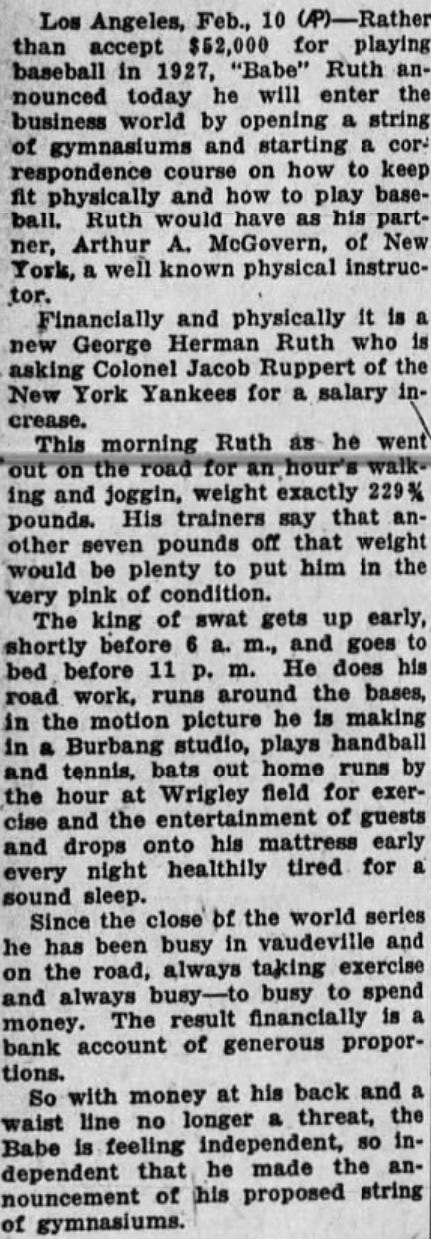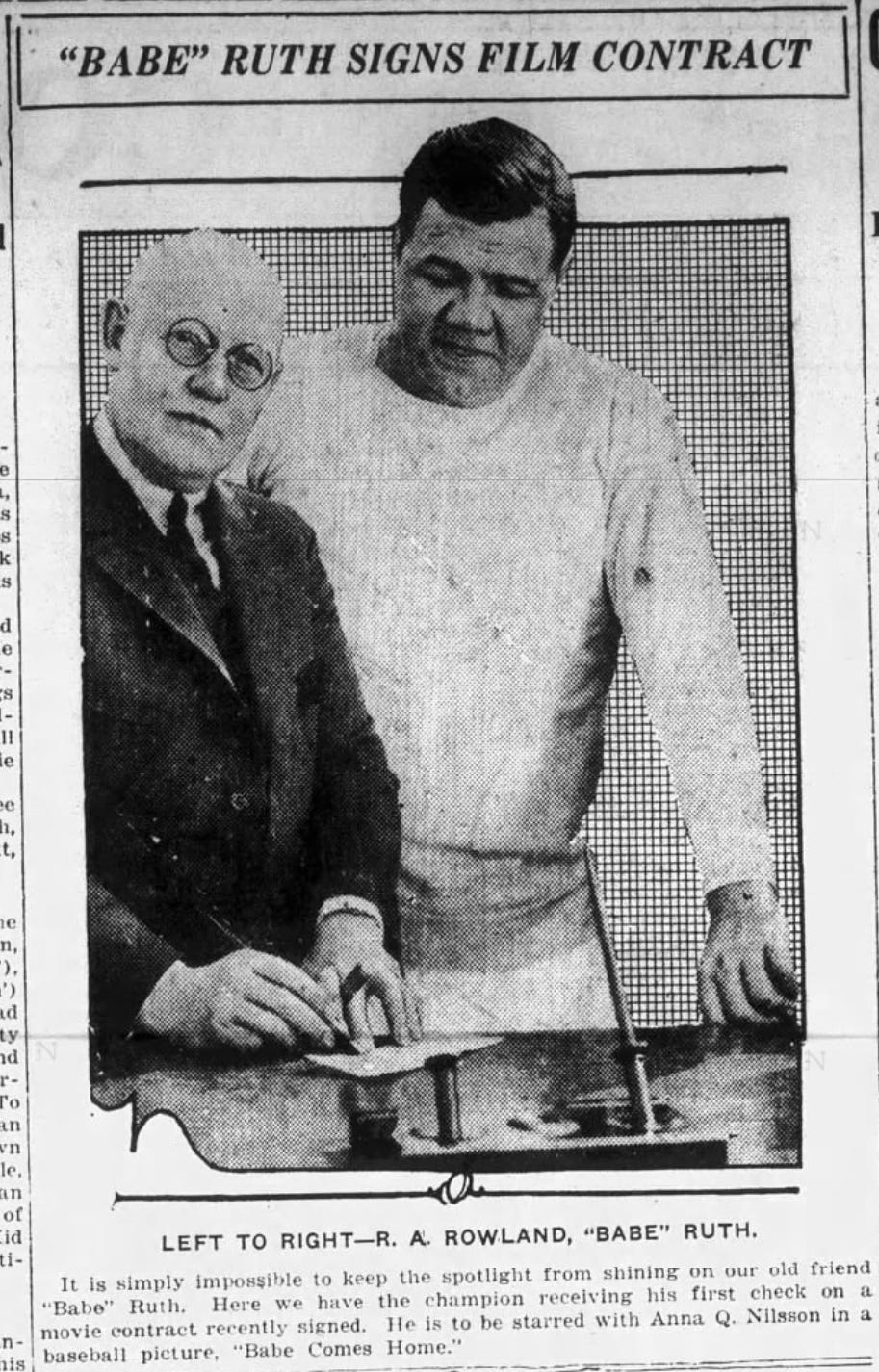When Babe Ruth Held Out
I probably don’t need to tell you that Babe Ruth was a star beyond our wildest imaginations.
I’ve seen a few Facebook and Twitter posts recently that criticize Ruth for a variety of things. These posters are upset that he played before integration, for example — never mind the fact that he frequently played against black teams while barnstorming. They’ll complain about his weight, forgetting that Ruth was a solid mass of muscle by the time he went to New York in 1920. They’ll complain about the pitchers he faced, forgetting that the fences were much further back, the bats were a lot heavier and didn’t have those paper thin handles, there was no “batter’s eye” in center field, and pitchers were throwing all sorts of spitballs and gunk pitches in the fading sunlight of the afternoon.
Ruth was better than you think he was, and remains relevant to this day.
But what you probably didn’t know about was Babe Ruth’s salary dispute in early 1927.
You see — Ruth had signed a $52,000 per year 6 year contract starting in 1921. That contract lasted through the end of the 1926 season — and the Babe knew a big payday must be coming.
As a formal act to keep Ruth on the reserved list, the Yankees sent him a contract for the exact same amount:
As you can tell, Ruth was in Los Angeles that offseason. He was busy filming Babe Comes Home, an hour long movie that isn’t quite up there with most of the classic baseball films. Ruth, however, made quite a bit of money from his Hollywood adventure, and likely had his eyes on more.
Ruth’s counteroffer to the Yankees was, umm, a little bit higher:
Now, there’s an important lesson to learn here. Even in the throes of the reserved clause era, back when it was impossible for a player to simply leave his team and offer his services to another team, players still had leverage.
There was only one Babe Ruth, after all! If the Yankees didn’t like it, Ruth could simply hang up his spikes the way good old Mike Donlin did about 20 years earlier. Donlin chose the stage over the ballfield; perhaps Ruth had a future in movies after all.
You could say that Ruth had no need for the money. That’s true — but Ruth was the most notable player in the game. He needed a high salary to serve as a symbol of his dominance, and also, hopefully, to help pull up the salaries of his teammates and other players around the league. If Ruth signed again for $52,000, there was no way any lesser player could expect to get a raise no matter how well he played. After all, the mighty Babe Ruth didn’t get a raise, did he?
And, of course, the Babe had most of the public on his side:
In the end, the Babe was successful. He got his big payday: $200,000, but spread out over three seasons.
Sure, it was only $70,000 per year — but it was for 3 years, or $210,000 total. And the Babe was now the highest paid player in the game, not to mention one of the highest paid people in the United States.
According to the inflation calculator at the Federal Reserve Bank of Minneapolis website, this would be worth a little over $1.26 million in today’s money:
It’s not the crazy salaries you see today, obviously. But, then again, baseball teams in 1927 didn’t exactly have a whole ton of revenue streams. In fact, the biggest revenue stream in all of baseball was Babe Ruth: you might as well pay him what he’s worth.



















Gee, you can make $1.26 today and hit .200 with 100+ strikeouts a year. Great article. Enjoyed old newspaper articles.